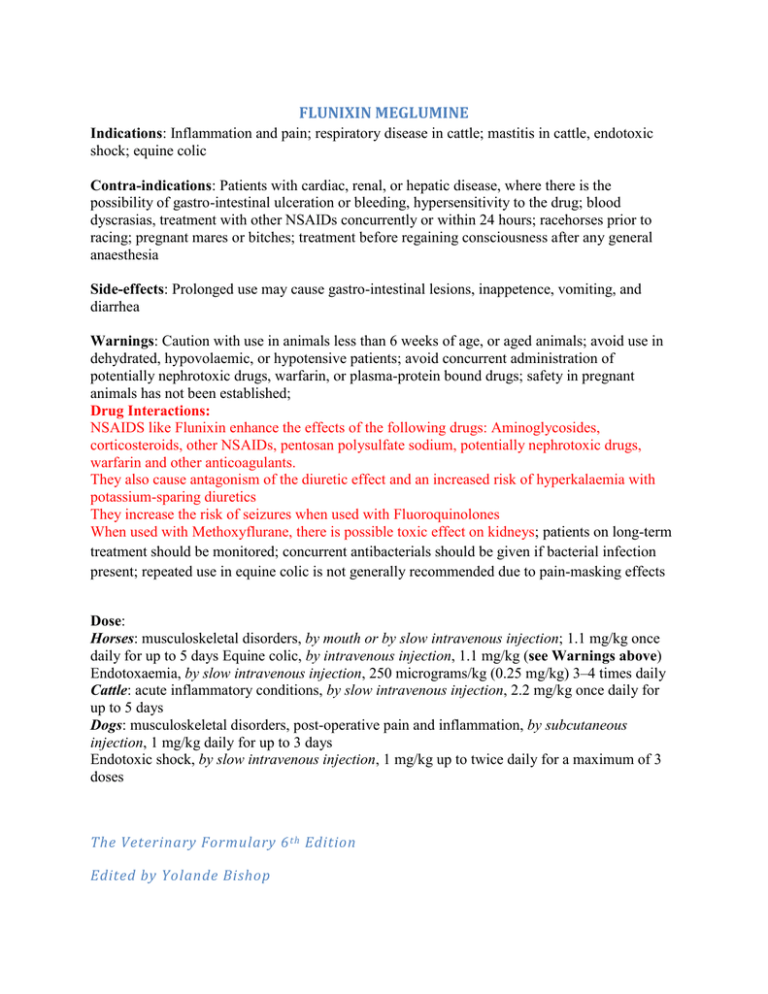FLUNIXIN MEGLUMINE
advertisement

FLUNIXIN MEGLUMINE Indications: Inflammation and pain; respiratory disease in cattle; mastitis in cattle, endotoxic shock; equine colic Contra-indications: Patients with cardiac, renal, or hepatic disease, where there is the possibility of gastro-intestinal ulceration or bleeding, hypersensitivity to the drug; blood dyscrasias, treatment with other NSAIDs concurrently or within 24 hours; racehorses prior to racing; pregnant mares or bitches; treatment before regaining consciousness after any general anaesthesia Side-effects: Prolonged use may cause gastro-intestinal lesions, inappetence, vomiting, and diarrhea Warnings: Caution with use in animals less than 6 weeks of age, or aged animals; avoid use in dehydrated, hypovolaemic, or hypotensive patients; avoid concurrent administration of potentially nephrotoxic drugs, warfarin, or plasma-protein bound drugs; safety in pregnant animals has not been established; Drug Interactions: NSAIDS like Flunixin enhance the effects of the following drugs: Aminoglycosides, corticosteroids, other NSAIDs, pentosan polysulfate sodium, potentially nephrotoxic drugs, warfarin and other anticoagulants. They also cause antagonism of the diuretic effect and an increased risk of hyperkalaemia with potassium-sparing diuretics They increase the risk of seizures when used with Fluoroquinolones When used with Methoxyflurane, there is possible toxic effect on kidneys; patients on long-term treatment should be monitored; concurrent antibacterials should be given if bacterial infection present; repeated use in equine colic is not generally recommended due to pain-masking effects Dose: Horses: musculoskeletal disorders, by mouth or by slow intravenous injection; 1.1 mg/kg once daily for up to 5 days Equine colic, by intravenous injection, 1.1 mg/kg (see Warnings above) Endotoxaemia, by slow intravenous injection, 250 micrograms/kg (0.25 mg/kg) 3–4 times daily Cattle: acute inflammatory conditions, by slow intravenous injection, 2.2 mg/kg once daily for up to 5 days Dogs: musculoskeletal disorders, post-operative pain and inflammation, by subcutaneous injection, 1 mg/kg daily for up to 3 days Endotoxic shock, by slow intravenous injection, 1 mg/kg up to twice daily for a maximum of 3 doses The Veterinary Formulary 6 th Edition Edited by Yolande Bishop



